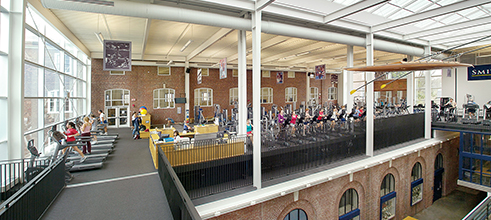Document Type
Article
Publication Date
7-1-2005
Publication Title
American Journal of Physiology - Regulatory Integrative and Comparative Physiology
Abstract
We tested the hypothesis that women have blunted sympathetic neural responses to orthostatic stress compared with men, which may be elicited under hypovolemic conditions. Muscle sympathetic nerve activity (MSNA) and hemodynamics were measured in eight healthy young women and seven men in supine position and during 6 min of 60° head-up tilt (HUT) under normovolemic and hypovolemic conditions (randomly), with ∼4-wk interval. Acute hypovolemia was produced by diuretic (furosemide) administration ∼2 h before testing. Orthostatic tolerance was determined by progressive lower body negative pressure to presyncope. We found that furosemide produced an ∼13% reduction in plasma volume, causing a similar increase in supine MSNA in men and women (mean ± SD of 5 ± 7 vs. 6 ± 5 bursts/min; P = 0.895). MSNA increased during HUT and was greater in the hypovolemic than in the normovolemic condition (32 ± 6 bursts/min in normovolemia vs. 44 ± 15 bursts/min in hypovolemia in men, P = 0.055; 35 ± 9 vs. 45 ± 8 bursts/min in women, P < 0.001); these responses were not different between the genders (gender effect: P = 0.832 and 0.814 in normovolemia and hypovolemia, respectively). Total peripheral resistance increased proportionately with increases in MSNA during HUT; these responses were similar between the genders. However, systolic blood pressure was lower, whereas diastolic blood pressure was similar in women compared with men during HUT, which was associated with a smaller stroke volume or stroke index. Orthostatic tolerance was lower in women, especially under hypovolemic conditions. These results indicate that men and women have comparable sympathetic neural responses during orthostatic stress under normovolemic and hypovolemic conditions. The lower orthostatic tolerance in women is predominantly because of a smaller stroke volume, presumably due to less cardiac filling during orthostasis, especially under hypovolemic conditions, which may overwhelm the vasomotor reserve available for vasoconstriction or precipitate neurally mediated sympathetic withdrawal and syncope.
Keywords
Arterial pressure, Head-up tilt, Muscle sympathetic nerve activity, Vascular resistance
Volume
289
Issue
1 58-1
DOI
10.1152/ajpregu.00013.2005
ISSN
03636119
Rights
© 2005 the American Physiological Society.
Recommended Citation
Fu, Qi; Witkowski, Sarah; Okazaki, Kazunobu; and Levine, Benjamin D., "Effects of Gender and Hypovolemia on Sympathetic Neural Responses to Orthostatic Stress" (2005). Exercise and Sport Studies: Faculty Publications, Smith College, Northampton, MA.
https://scholarworks.smith.edu/ess_facpubs/30



Comments
Archived as published.